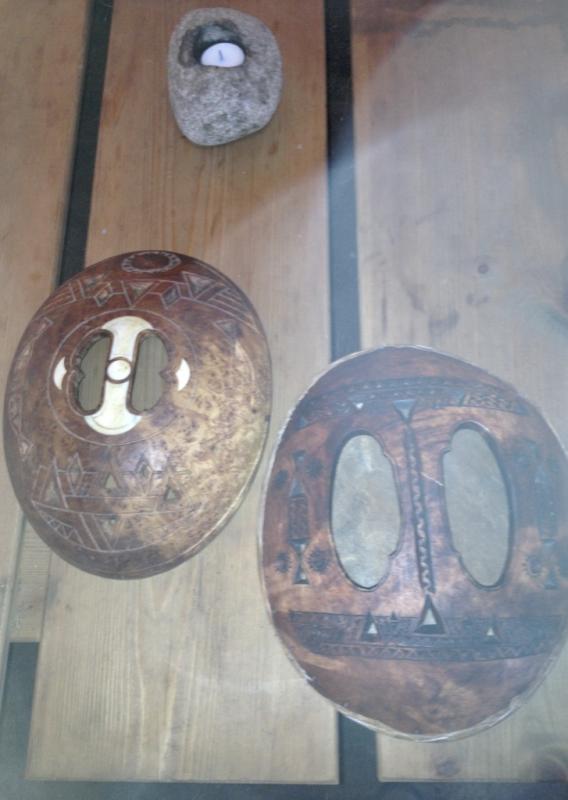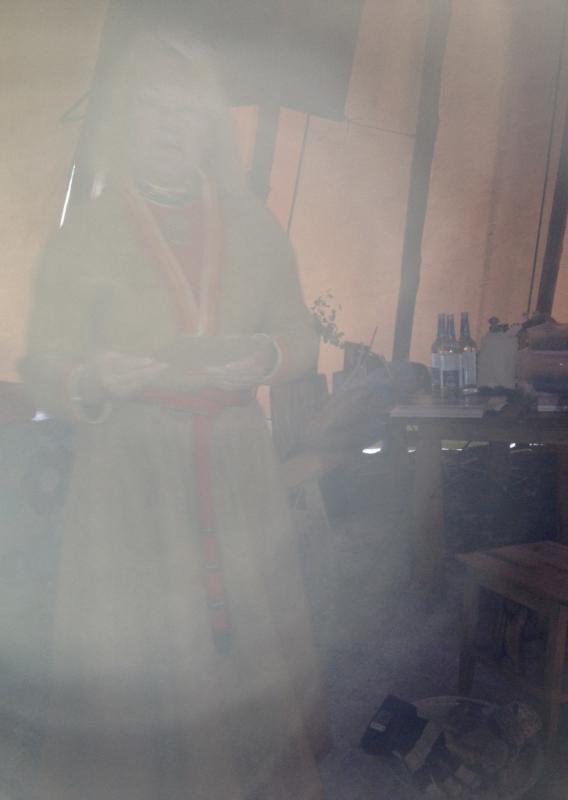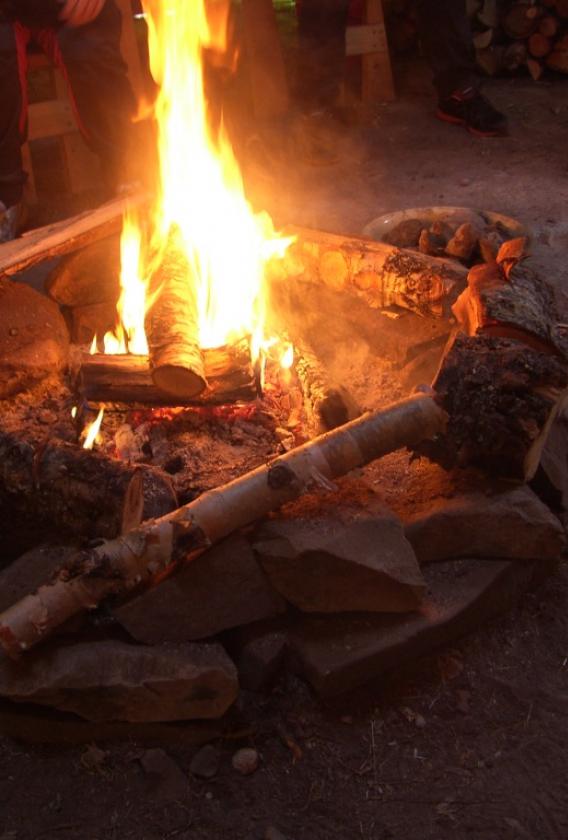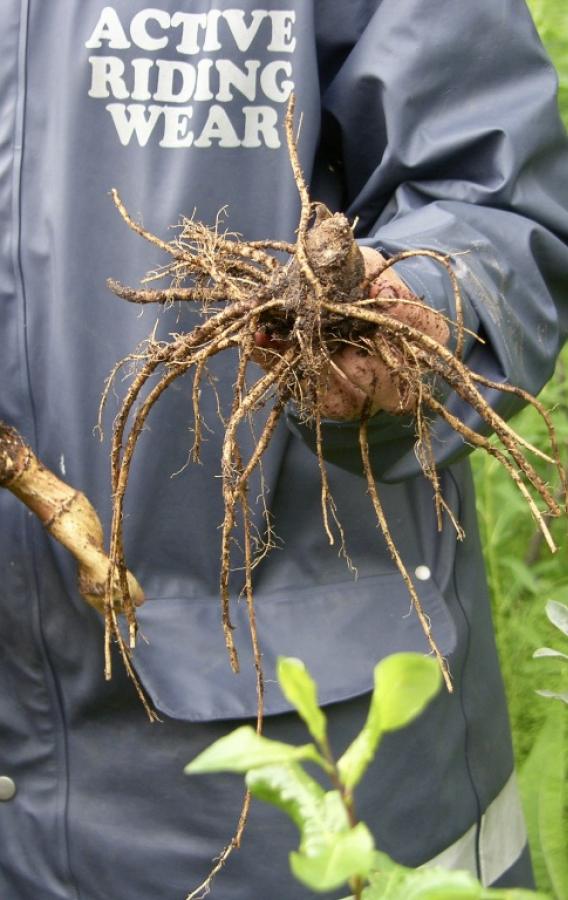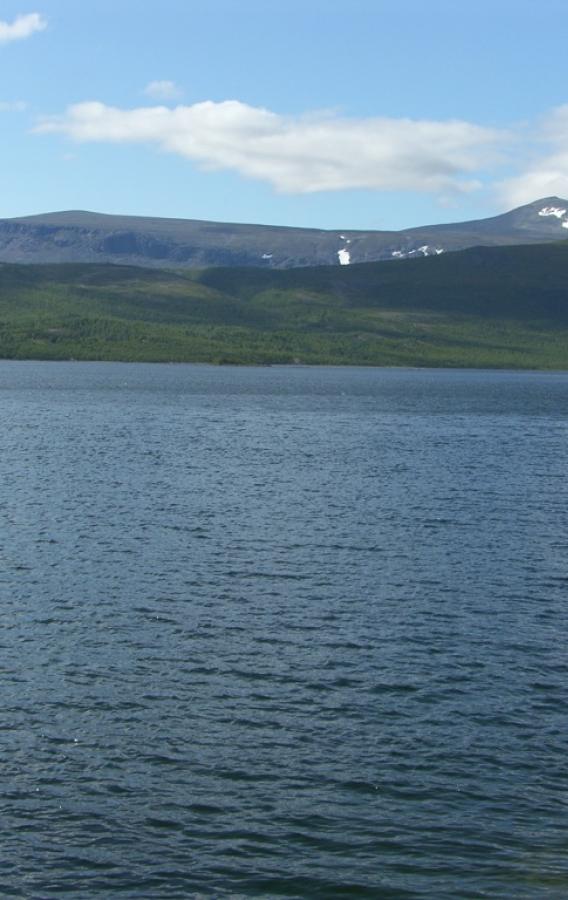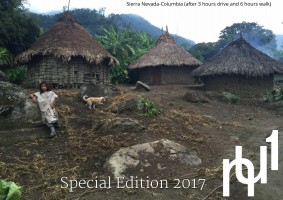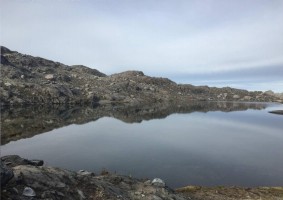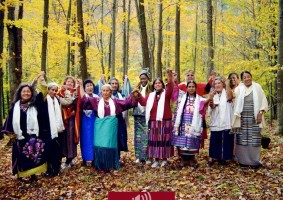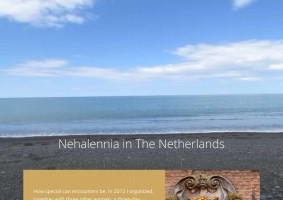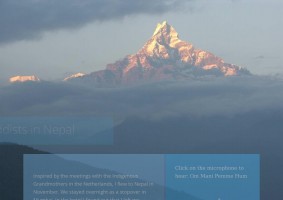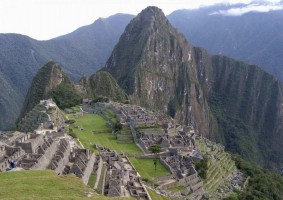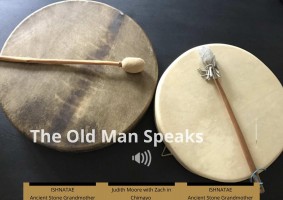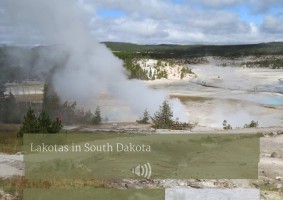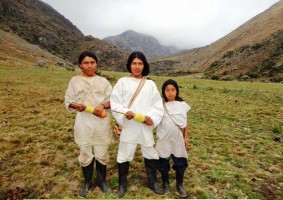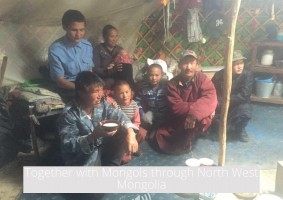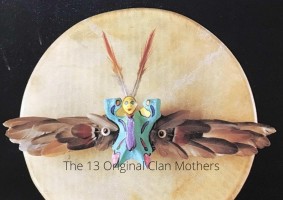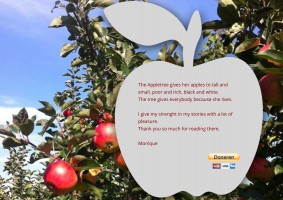I felt very excited when I went to Sweden to meet The Indigenous Grandmothers again. How would it be this time? I was also very curious to hear about the culture of the Samies. The hotel where The Grandmothers stayed was a heavy place. A lot had happened there in the past. The board of the hotel explained to us that they select the staff on their personality and their will to learn and that they do not look at their background. I noticed that the staff was very caring to everybody. The board was honoured that The Grandmothers wanted to be their guests and offered them free accommodation
Grandmother Agnes opened the Gathering.
She was so powerful and strong and so different from how I saw her in Nepal. Grandmother Agnes stressed again that we are the voices of the ones who do not have a voice: “We are all speaking to an unseen world, speaking for our Mother Earth, trying to stop our spiritual blindness. We speak for the animal kingdom, for those in the waters, for the ‘four-legged creatures’ and the ‘one-legged’.
The creatures have a right to be here.
We are able take care of ourselves; decide what to eat and where to live; but now we are unbalanced. We have cut the green off our Mother’s face. We pollute the water; her blood. The trees they are the ones that call the wind and the rain. Without the ancient trees at the top of our mountains we are in trouble. The young trees can’t do the same work as the old trees that have been destroyed.” Grandmother Agnes believes that with the brain, humanity was given a mandate to be the caretaker of all that came before and to keep the four elements: earth, air, water, and fire in balance. “We have walked away from those teachings, and the planet is suffering,” she said.
The ceremonies were powerful and we shared a lot of wisdom. I’d like to share with you the ones which impressed me the most:
- Take care of nature with the whole of your heart; talk to the plants and the trees. They will gain more and more strength; in order to give us the right amount of food and healing properties.
- When you have a vision, or a dream, take it seriously and act on your dream. The stars, the sun, the moon they all have a relation with you!
- Bless the water every day. Talk to the water. The water will make contact with the water in your body and in this way it will have a healing effect on your body
- Walk your talk
- Have respect for all living things
- Have fun!
- Take responsibility for yourself
Full of energy I went up to the North to look for Grandmother Laila of the Swedish Samies together with a friend.
After we have left Stockholm on the night train and arrived 14,5 hours later in Gällvare we still had a two hour bus journey and a 15 minute boat journey before arriving in Saltoluokta, our destination. We followed the path which led us to Grandmother Laila who was busy with teaching the Sami culture to a trainee who was studying the Sami culture.
Saltoluokta seemed to be a beautiful place with a fairytale wood in between the mountains and the lake of Saltoluokta.
We went up to say ‘Hello’ to GM Laila who was finishing her explanation and she welcomed us. She showed us our tipi tent where we would sleep. It was beautiful weather when we arrived but up North the weather can change in a second and it did. Low temperatures accompanied by a cold wind would dominate our stay and I would not take off my clothes during the six days.
But who cares when you are in such a lovely surrounding with such a beautiful woman who is willing to share all her knowledge of the Sami. It is important to keep the knowledge alive and to share it with the rest of the world.
The Sami is an ethnic group in the Europe to be recognised as an aboriginal people. They are a minority living in four countries and have their own language and culture. They live in Sweden, Norway, Finland and Russia.
The Sami should not be confused with “Laplanders”. Laplanders are people who live in the province of Lapland in Finland, regardless of whether they are Sami or Finns.
The Sea Samis is the largest group. They live along the Arctic coast and they live only in Norway. Next to the Sea Sami you have the Forest and the Reindeer Sami. Their livelihood was based on their proximity to nature and a diverse economy of hunting, fishing and gathering and later small scale reindeer herding.
Some Sami communities were entirely nomadic because they followed their reindeer. There are indications that the Sami lived together with reindeer for more than 1,000 years.
They lived in complete harmony with the animals. They even fed on the animals when they could not find enough food. To me it seemed quite a contradiction that they then took the animals lives to feed and clothe themselves.
But as Grandmother Agnes said in the book of The International Council of the Thirteen Indigenous Grandmothers: “The salmon is there to feed the human being”. In the same way the Sami look at their reindeers.
Out of respect for taking the lives of their reindeers they hold ceremonies to show their gratitude. The reindeers, beavers, moose and bears are animals sacred to the Sami.
The Elders of the Sami were, and still are, the advisers to the younger ones.
When the Sami wanted to make contact with the Goddess it was the Shaman, the Noaidi, who did this.
GM Laila told us how she had a serious accident; her legs were paralysed and her sight was very bad. The regular doctors could not help her and told her to live with her situation but GM Laila did not give up and with her knowledge of the plants and the herbs and the ring of brass (a ring the Sami use as their third eye) she managed to walk and to see again. When she walked into the hospital to see her doctor, the doctor asked his assistant to cancel all his appointments for the afternoon. He wanted to have a long talk with GM Laila.
One day GM Laila took us to her fairytale wood and explained to us how you can use the plants, the trees and the roots. So I made jam from the roots of Angelica and I made bread from bark.
When I arrived GM Laila saw my rosacea and when I left she gave me juniper to take and moss to make tea with and my rosacea has now almost gone.
She also told us how she burned her arm badly and how the frogs from the wood healed her arm with the mucus they produce.
During these days she told us about the objects they made and used in their culture, such as the drums which were almost all burned when the church ruled their areas.
They saved 70 drums.
They were not used to entering into trance but in an everyday context, to find out what life holds in store. Would the hunt be successful? Would they be able to find the reindeer herd? What kind of water was coming? Would life be good in future?
It was the pictures, or figures, on the drums that were important here, and it was in them that the answers to the questions lay hidden. This is probably why the drums that survive are so richly illustrated.
Just as in the noaidi ceremonies, the drum-skin was warmed by the fire and a pointer or ring laid upon it. This could be a ring of brass, or a pointer of antler. With the help of the luohti and the beat of the hammer, the pointer began to move over the drum-skin. The path that the pointer took was ‘read’, and the figures by which it stopped could be interpreted.
The drum was a kind of oracle. The ring of brass has been used as their third eye and is very helpful to focus and to see things from a different perspective.
One evening we were sitting at GM Laila’s kitchen table when she turned on the Yoik music.The Yoik represents the clearest of all the age-old Sami cultural traditions.
Yoik music is said to be ‘the world’s most aboriginal song form’. Yoik is said to remove distance: the friend who is gone is brought back through a yoik. In the comprehensive and personal nature of its feelings the yoik brings people together, creating solidarity. And that is precisely one reason for its preservation.
The yoik has always been one of the cornerstones of Sami identity. It is no wonder that, in its attempt to break down the Sami belief system and world-view, the church attacked yoiking.
As well as forbidding spiritual yoiking, it also forbade normal, secular yoiks, just because of their distinctiveness. We heard a lot more about the Sami culture in the common tipi where an open fire was always burning and where we grilled reindeer meat.
GM Laila gave us a plate with different kinds of meat and we had to guess what each was; bear, moose, reindeer, it all was delicious. All the fruit and vegetables came from the fairytale wood. I realised this was real wealth.The Sami do not need money. They can survive because nature gives them what they need and they know how to look after nature and how to use it.

_w568_h800_1.jpg)
_w568_h800_1.jpg)
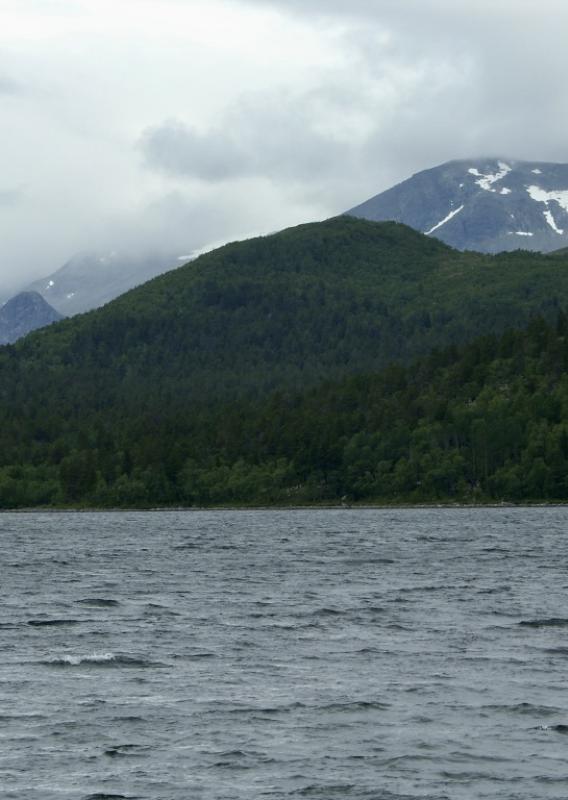
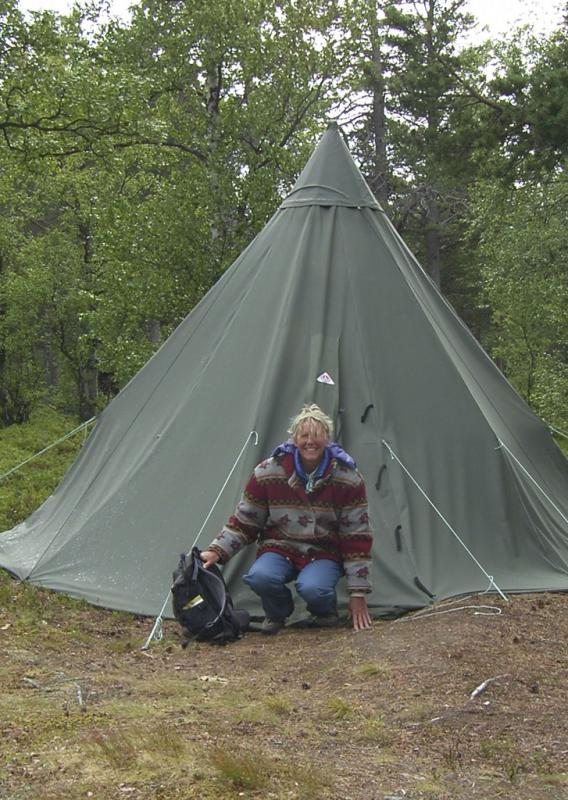
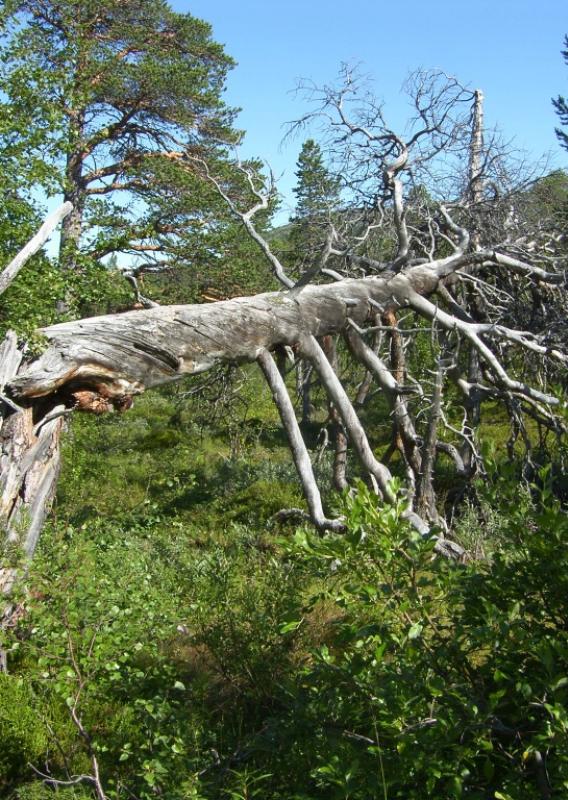
_w568_h800_1.jpg)
